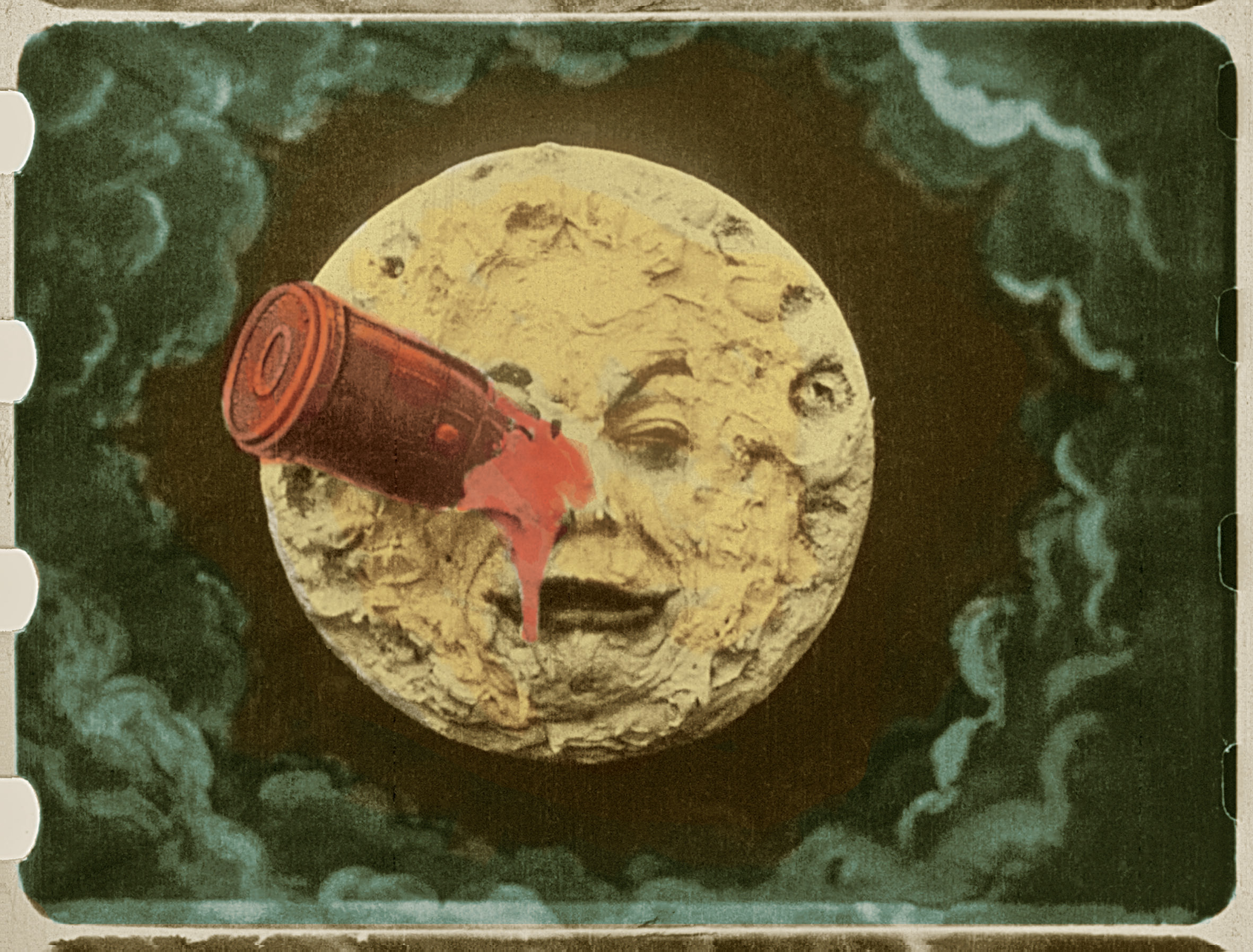The film and book are about a young orphan, Hugo, who stumbles on an old android that needs repair. He lives in a clock tower in a train station. He is alone after his father disappears, and he steals parts from Melies' toy stall, also located in the train station. The villain is the station security guard, who himself walks like wind-up toy, in contrast to the fantastic automaton that is repaired by the end of the film.
 |
| Voyage dans la Lune, Melies |
There are several nods to the surrealist film school to which Cornell also belonged. In one scene, a train roars through a station window, just as it does in Cornell collage. Cornell used dolls, toys, and other memorabilia to create collages and his famous shadowboxes. Bebe Marie featured a large Jumeau doll. For more on Cornell, read Utopia Parkway.
| Bebe Marie |
The automaton exists today in The Franklin Institute. When repaired, it wrote out, "I was made by Maillardet." Janet Pagter Johl featured it in one of her books; it was dressed as a woman at that time.
 |
| Maillardet' Automaton in the Franklin Institute today, Public Domain |
| The Automaton from Hugo. Public Domain |
 |
| Public Domain |
 |
| Public Domain |
Selznick wrote a book on the making of Hugo. He named the hero after the doll "Hugo; man of a Thousand Faces." Believe it or not, we don't have this doll in the museum. He is on our wish list along with similar dolls Myrtle from My Three Sons and Kitty Karryall from The Brady Bunch.
 Public Domain Image
Public Domain ImageI wish we'd found each other when it came to researching automatons.
For more of Selznick's work, see his illustrations for The Doll People..
 |
| Public Domain |



























































wCWk~%24(KGrHqV,!h8Ew5GsnS3dBMUy3MzVPg~~_3.jpg)






































































No comments:
Post a Comment